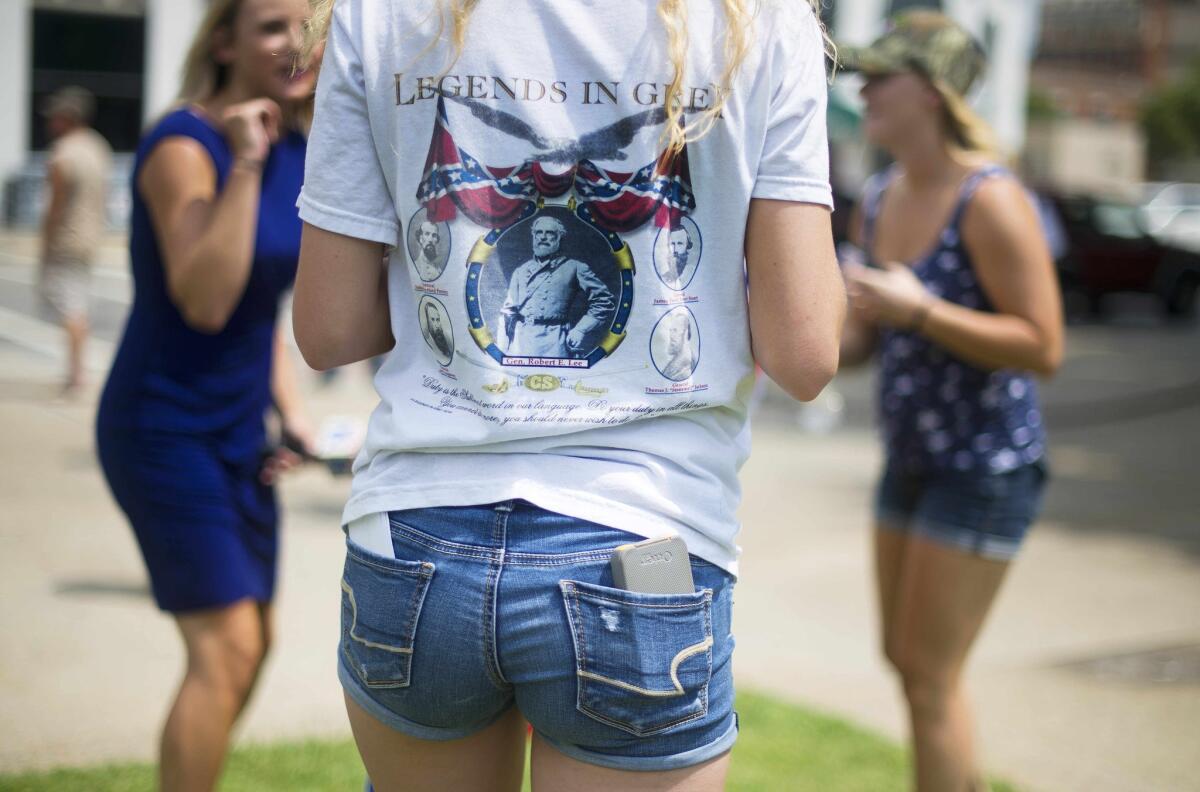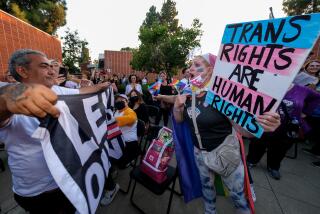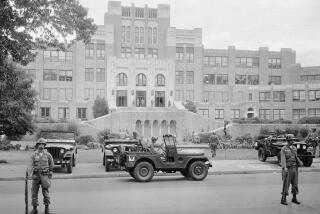Editorial: Should students be allowed to wear Confederate flag clothing?

A pro-confederate flag demonstrator wears a t-shirt that depicts the Confederate legends of the US Civil War outside the South Carolina State House in Columbia, South Carolina, June 27.
Defenders of the Confederate battle flag insist that it symbolizes heritage, not hate, but many other Americans understandably see it as an emblem of white supremacy. That’s why South Carolina legislators were right to remove the flag from the grounds of the state Capitol after Dylann Roof, who was photographed holding a Confederate flag, was accused of killing nine African Americans at a Charleston church.
But it’s one thing for the state government to remove the flag from a place of honor and another for the Charleston County School District to prohibit students from wearing clothing bearing the flag, as officials did this week. The second action, unlike the first, infringes on the free speech of individuals.
The notion that children enjoy a right to free speech is an uncomfortable thought for some school administrators (and more than a few parents). But it has been the law of the land since the 1969 Supreme Court decision in Tinker vs. Des Moines Independent Community School District. Ruling in favor of students who wore black armbands to school to protest the Vietnam War, the court said that schoolchildren don’t “shed their constitutional rights to freedom of speech or expression at the schoolhouse gate.” Schools could suppress student speech, the court held, only when administrators had a reasonable expectation that the speech would cause “substantial disruption of or material interference with school activities,” or when the speech would violate the rights of other students.
We don’t see how the Tinker decision can be reconciled with a policy of prohibiting students from wearing clothing bearing the Confederate flag. Charleston County school officials justified the ban by noting the connection between the flag and recent “racially divisive and tragic events,” but that doesn’t come close to satisfying the Supreme Court’s requirements.
The school district can take some comfort in the fact that in recent years courts have watered down the holding in Tinker. For example, last year the U.S. 9th Circuit Court of Appeals upheld the actions of officials at a school near San Jose who told white students who wore American flag shirts on Cinco de Mayo to remove them lest they provoke an altercation with Latino students. That sort of better-safe-than-sorry policy was also inconsistent with Tinker, but the Supreme Court declined to review the 9th Circuit’s ruling.
We hope the justices will seize a future opportunity to resoundingly reaffirm the central holding of Tinker — that, while schools may respond to real threats of violence or disruption, they must respect students’ 1st Amendment rights.
The 1st Amendment aside, silencing student expression undermines the educational process. Especially at the high school level, students need to learn not only classroom subjects but also the importance of tolerating — and criticizing in a civil way — opinions and images they find offensive. When they leave school, the children of Charleston County will encounter people who think differently and fly different flags. Why not prepare them for that reality?
Follow the Opinion section on Twitter @latimesopinion and Facebook
More to Read
A cure for the common opinion
Get thought-provoking perspectives with our weekly newsletter.
You may occasionally receive promotional content from the Los Angeles Times.






